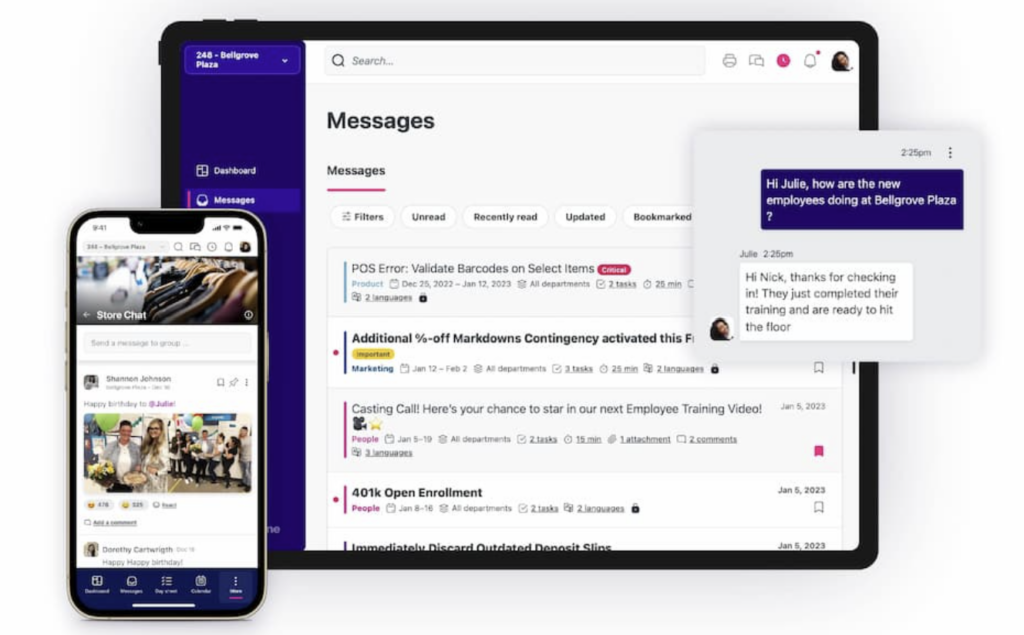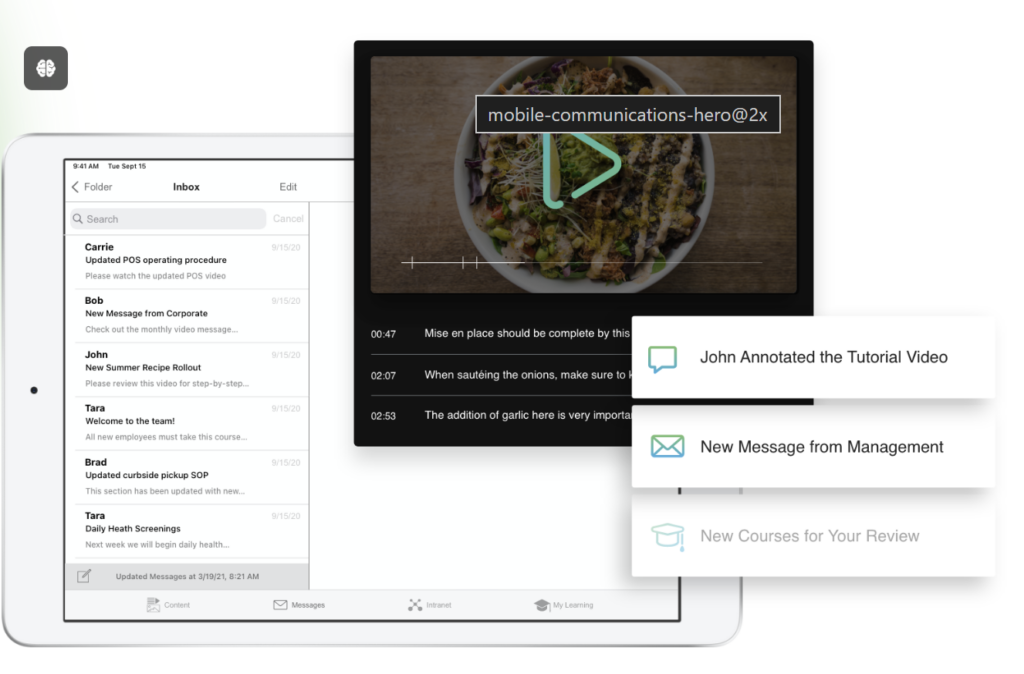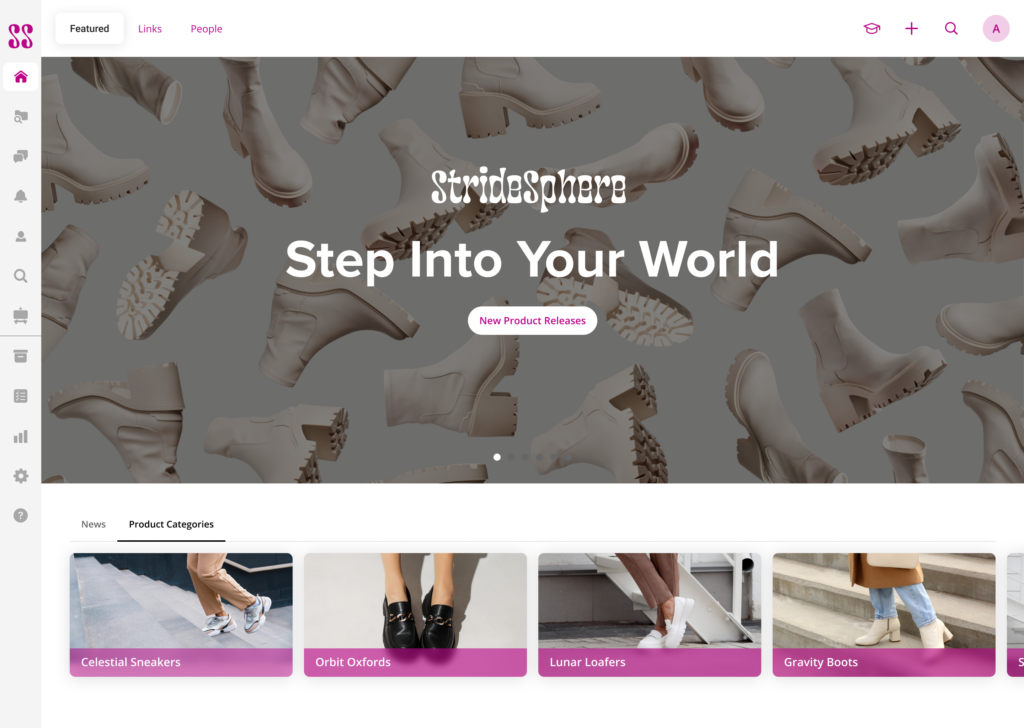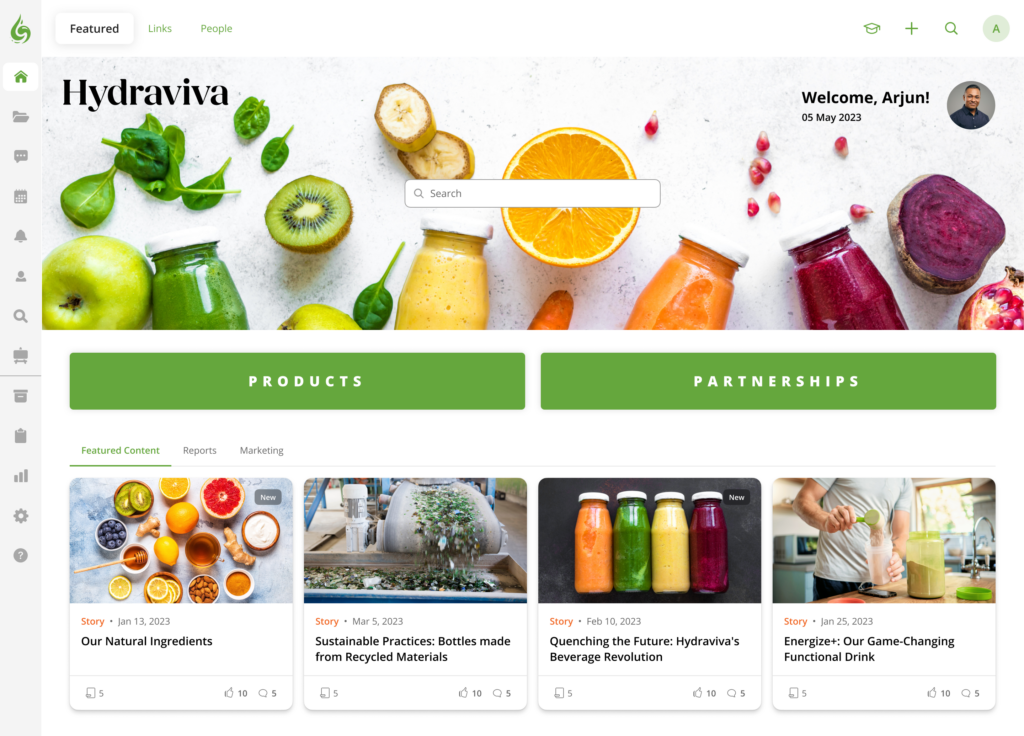Traditional retail training methods are failing modern workforces. Sales associates either:
- Don’t retain information delivered via outdated formats, leading to high turnover rates
- Don’t receive adequate training to provide the level of service customers expect
The cost? Lost sales, poor customer experiences, and wasted resources.
The typical retail training experience looks familiar to most: associates sitting at the store's only desktop computer, clicking through endless slides in a back room. This "data-dump" approach isn't just ineffective — it's scientifically proven to fail. Today's retail environment demands something different: short, engaging training that prepares associates for real-world customer interactions.
In this article, we'll compare leading retail operations platforms and explore how modern AI-powered learning tools improve associate training through features like real-time practice scenarios, intelligent coaching, and personalized learning paths.
The boredom of long-form training (and its impact)
The retail industry faces a critical engagement crisis, and traditional training methods are part of the problem. Recent data paints a stark picture: nearly three-quarters of retail workers report being bored at work, with 20% experiencing boredom daily and 25% feeling disengaged multiple times weekly.
This isn't just about boredom — it's about business impact. With retail turnover rates soaring above 60% and reaching a staggering 95% in late 2023, the cost of disengagement is impossible to ignore. Even more telling: only 31% of employees report feeling engaged, enthusiastic, and energized by their work.
But here's the good news: employees want to learn and grow. A remarkable 80% say opportunities to learn new skills would increase their interest and involvement. And, 53% of workers wish their employers would invest in professional development and skills training.
The message is clear: traditional "sage on the stage" training methods — those endless huddles, dense handouts, and mind-numbing computer modules — aren't just ineffective; they're actively driving away talent. Modern training methods such as microlearning, just-in-time learning, and gamification aren't just trendy alternatives — they're essential tools for building an involved, skilled, and stable workforce.
With this in mind, let’s compare several retail operations and training tools to improve employee learning and retention.
Zipline: Bringing order to retail chaos

Your store team is drowning in a sea of emails, tasks, and corporate messages. The kind of problem Zipline set out to solve — and they're pretty good at it.
What makes Zipline special?
- Task management that makes sense: Turns complicated corporate-speak into clear, doable tasks. Managers can see what's getting done (and what isn't) across all their stores, while associates get simple to-do lists that keep them focused on what matters.
- A smart document library: No more digging through endless folders or asking "Where was that file again?" Zipline's search can even peek inside PDFs to find what you need, and it only shows you stuff that applies to your role.
- Customer feedback that works: Store teams can grab customer feedback on the spot, and managers can spot patterns across different locations in real-time.
- Keep everyone on the same page: Built-in assessments ensure every store is following the playbook while flagging where teams might need an extra hand.
- Microlearning for better memory: Quick lessons and knowledge checks keep teams sharp, while managers can track who's keeping up. It's not trying to replace your LMS, but it adds some helpful learning features to its operations toolkit.
The bottom line: Zipline makes store operations run smoothly and keeps teams connected. While it's got some basic training features built in, it's not trying to be a full learning platform. If you're looking to build out serious training programs, add a dedicated learning tool to your tech stack.
Reflexis: Making workforce management easier

Let's talk about Reflexis (now part of Zebra Technologies). If you've ever tried to create the perfect store schedule — you know, the one that keeps everyone happy while hitting your labor targets — you'll get why Reflexis is such a big deal in retail.
What sets Reflexis apart?
- AI-powered scheduling: Remember when making schedules meant juggling spreadsheets and prayer? Reflexis's AI looks at your past data, knows when you'll be busy, and creates schedules that work for everyone — including your labor budget. Plus, it keeps you on the right side of labor laws (because nobody needs those headaches).
- Smart to-do lists that adapt on the fly: When things get crazy in retail (and they always do), Reflexis automatically shuffles tasks around to focus on what's most important. Got a surprise visit from corporate? The system adjusts your priority list in real-time.
- Time tracking that doesn't make you want to cry: Forget those clunky old-time clocks. Teams can clock in from their phones, managers get automatic alerts about overtime, and it all flows straight into payroll without the usual headaches.
- A decent spot for store docs: While it's not trying to be a full-blown training platform, Q-Doc gives your team a reliable place to find procedures and policies when needed.
- Everything works on phones (because it's the 21st century): Your team can handle pretty much anything from their phones — no more running back to that crusty computer in the back office.
The bottom line: Reflexis is your go-to if you want to nail workforce management and store operations. It's keeps your schedules, tasks, and time tracking running smoothly. But if you're looking for a more comprehensive training program, find a learning management software instead.
PlayerLync: Improving mobile training

Ever tried watching a training video in your store's back room, only to spend more time staring at the buffering icon than learning? PlayerLync tackles this classic retail headache head-on.
What sets PlayerLync apart?
- Video that actually works: Its smart compression technology shrinks those massive training videos without sacrificing quality. Better yet, once you download content, everything works offline.
- Practice tools that make sense: Sales teams can record themselves practicing customer interactions right from their phones. Managers can give feedback that actually helps, not just generic "good job" comments.
- Mobile-first, not mobile-maybe: Everything's built with phones and tablets in mind. Your team can learn during quiet moments on the floor, between customers, or whenever works best — no more scheduling training sessions around that one desktop computer.
- Content that travels well: Once content is on a device, it stays there until you decide otherwise. That means your team can access training materials anytime, anywhere, without eating up their data plans.
- Team chat that keeps it simple: Built-in messaging lets everyone stay connected without jumping between apps. Whether you're asking for help or sharing wins, it all happens in one place.
The bottom line: PlayerLync gets training content to your frontline teams without the usual technical headaches. While it handles basic workforce tasks, its real strength is making mobile learning actually work. However, if you need serious scheduling or task management muscle, you'll want to add another tool to your stack.
WorkJam: Offering better communication on the frontlines

WorkJam wants to be your safety net, bringing together all the moving parts of operating a retail store — schedules, tasks, training, and team chat — into one mobile center.
What sets WorkJam apart?
- All-in-one mobile app: Your team gets everything they need in one place — schedules, tasks, training modules, and team chat. No more app-hopping just to get through the day.
- Learning that fits the job: Bite-sized lessons and game elements make training feel less like a chore. Badges and leaderboards add some friendly competition, while microlearning fits naturally into daily work.
- Smart scheduling that works: The platform balances business needs with team preferences, while keeping you on the right side of labor laws.
- Crisis management without chaos: When things go sideways (and in retail, they will), WorkJam helps get the right information to the right people fast. No more "did you see that email?" conversations.
- Team communication that clicks: From store-level chats to company-wide updates, everyone stays in the loop without drowning in notifications.
The bottom line: WorkJam is ideal if you want one platform to handle pretty much everything your frontline teams need. While it includes solid training features, it’s basic compared to dedicated learning platforms. It’s handy for most tasks, but you may want specialized tools for enhanced training programs.
Bigtincan: Providing end-to-end retail training

Did any of the tools we mentioned pique your interest? Maybe so, but you’re hesitant since they’re not comprehensive retail training software. No biggie. Bigtincan plays well with these and other workforce management tools.
Bigtincan is a retail training and sales enablement platform that improves onboarding and training. We’re talking a 90% reduction in ramp time and a 3x faster close rate.
Here’s how it makes work life easier for your managers and retail employees.
Microlearning
Bigtincan tackles retail's biggest training challenge: information overload. Instead of marathon back-room sessions, the platform delivers bite-sized, compelling content that sticks.
Here's what makes it work:
- Quick-hit content: 1-2 minute videos, interactive quizzes, and short modules that associates can complete between customers
- Real-time updates: Managers can create and push out new product info or promotion details instantly — no more waiting for weekly meetings
- Double duty content: The same quick training materials can be shown to curious customers, turning learning tools into sales aids
- Smart feed delivery: Priority content appears right in the app's home feed, so critical updates never get buried in email
The results speak for themselves: teams interacting with these micro-lessons (15 minutes or less) show 41% better information retention compared to traditional training methods.
This approach isn't just more effective — it's practical. Associates can learn during natural downtimes, managers can update training on the fly, and customers benefit from better-informed staff. It's training that fits how modern retail works.
Just-in-time learning

Bigtincan's second core strength is its just-in-time learning delivery. Think of it like YouTube — when you need to learn something, you search for it and learn it right then. That's just-in-time learning: delivering knowledge when it's needed, not just because it's next in the curriculum.
This changes how associates learn on the sales floor. And thanks to Bigtincan's AI-powered search and smart content organization, finding answers takes seconds. So whether it's checking product specs or showing a comparison chart to a customer, everything's available instantly on their phones.
For new hires, this is a game-changer. Instead of spending days training, they can start serving customers faster. Need to know about a product feature? Look it up. Customer asking about a promotion? It's right there. This instant access to information helps associates appear more professional and knowledgeable from day one.
Bigtincan also suggests what to learn next, based on each associate's progress and the store's requirements. Combined with microlearning, this smart approach dramatically reduces training time while boosting information retention.
The result? Associates who are confident, well-informed, and ready to deliver exceptional service that keeps customers choosing brick-and-mortar over online shopping.
Gamification

It’s a fact: gamification increases motivation and raises employee morale. Between leaderboards and achievement badges, employees using Bigtincan can motivate each other and cheer for the winner.
Bigtincan also provides detailed insight into user activity and participation levels. Trainers can use this information to further gamify training by giving out physical prizes to the most active learners.
Managers can also receive alerts for employees not keeping up with their training. This helps the manager discover any difficulties that particular employee might have to get through the training.
For example, if an experienced employee keeps getting basic training materials they already know, they'll likely lose interest. A manager can then adjust their training program to focus on new, relevant content that actually helps them grow.
Branding

What makes Bigtincan even more appealing? It’s completely customizable to match the retailer’s branding.
The app’s built-in design tools allow you to change everything from the font to the layout and background.

Distributed approach
Managers are overworked, and exclusive training that requires a schedule and curriculum creates bottlenecks. Bigtincan is a mobile-first application and works entirely from the cloud, so users learn on their own time, anytime, and from anywhere.
Training content can also be sourced from anywhere, even from top-selling associates who want to share what they’re doing that works. This frees up the bottleneck, leaving managers with one simple task: vetting the content and then pushing it to their learners.
What modern retail training apps must deliver
Today's retail associates aren't just sales people — they're brand ambassadors, product experts, and experience creators. But here's the challenge: traditional training methods aren't equipped for this change. Desktop-bound learning sessions and printed manuals can't keep pace with constantly changing products, promotions, and customer expectations.
The mobile-first future (and present)
Modern retail training must meet associates where they are: on their phones. Why? Because:
- Retail associates already use their smartphones for work-related tasks
- Mobile learning leads to higher productivity compared to traditional methods
- Associates complete training modules faster on mobile devices
Three pillars of effective retail training
- Flexibility: Training must fit into the natural flow of work — whether that's during morning prep, between customers, or during commute time.
- Accessibility: Content should be available instantly, online or offline, right when associates need it. No more hunting through binders or waiting for manager approval.
- Interest: Interactive elements, bite-sized content, and gamification aren't just nice-to-haves — they're essential for information retention and implementation.
The cost of inadequate training is clear: lost sales, damaged brand reputation, and turnover rates that can exceed $3,000 per associate. For global retailers, this adds up to millions in preventable losses.
The digital-physical retail divide: Why training matters more than ever
"Here's a reality check: US e-commerce sales reached $1.24 trillion in 2023, while brick-and-mortar stores still account for 80% of all retail purchases. The total US retail sales hit $8.294 trillion in 2023, with in-store sales representing 85% of retail revenue.
Why? Because physical retail isn't just about transactions — it's about experiences. And those experiences live or die by your frontline team's capabilities.
Here's a reality check on retail training's impact:
- 27% of shoppers rank knowledgeable and helpful store associates as their top factor for enhancing in-store experiences — this number jumps to 50% among Baby Boomers.
- Companies investing in comprehensive training programs see a 24% higher profit margin compared to those that spend less on employee development.
- Over 40% of shoppers say their retail experiences have declined post-COVID, with 64% pointing to "poorly trained or prepared staff" as a key reason.
But here's the challenge: while e-commerce platforms constantly update and optimize their digital experience, many brick-and-mortar retailers still rely on outdated training methods that leave associates unprepared for today's demanding customers.
Modern shoppers arrive with product research, comparison prices, and high expectations. They're not just looking for products — they're seeking expertise, personalization, and smooth service that justifies choosing physical retail over online shopping.
That requires cutting-edge training.
This simply can’t be done in a back room once a week. Product info and store specials can change by the hour. Brands need an easier method of imparting this knowledge to employees while keeping them intrigued.
This is solved by:
- Microlearning
- Just-in-time learning, and
- Gamification
Microlearning provides targeted, focused content users can consume within a few minutes. A video, PowerPoint presentation, document — any of these are valid micro-content (as long as they can be viewed or read rapidly).
These digestible bits of micro-content can also be used for just-in-time learning, which helps customer-facing employees prepare for interactions or learn new information when the situation calls for it.
Gamification turns the learning activity into a game by providing game-related features in the learning experience, such as leaderboards, prizes, and awards for top achievers.
During slow periods on the sales floor, retail associates are often bored. Smart training tools with quick lessons and game-like features keep them productive and interested in their work — making them more likely to stick around longer.
And, when a customer walks in, the enlightened associate can offer the smooth experience of top-quality service that, In previous years, was available only in Fifth Avenue stores. Now, it can be experienced at Target or even Walmart when using the right solution.
Choosing the right retail training solution
There's no one-size-fits-all solution in retail operations and training. Zipline excels at simplifying communications, Reflexis masters workforce management, PlayerLync nails mobile content delivery, and WorkJam offers a solid all-in-one approach.
Each platform brings something valuable to the table.
But here's what matters: modern retail demands more than basic training or operations management. You need a solution that grows with your business, interests your associates, and delivers measurable results.
That's where Bigtincan stands out.
Deploy it as your primary training platform. Or connect it to your existing workforce management tools. Whatever your approach, Bigtincan delivers the comprehensive learning experience modern retail demands.
Its combination of microlearning, just-in-time training, and gamification creates knowledgeable associates who can deliver exceptional customer experiences that keep brick-and-mortar retail competitive.
The choice is yours — but if you're serious about upgrading your retail training, Bigtincan offers the flexibility and functionality to take your team to the next level. Schedule a demo today to see it first-hand.
